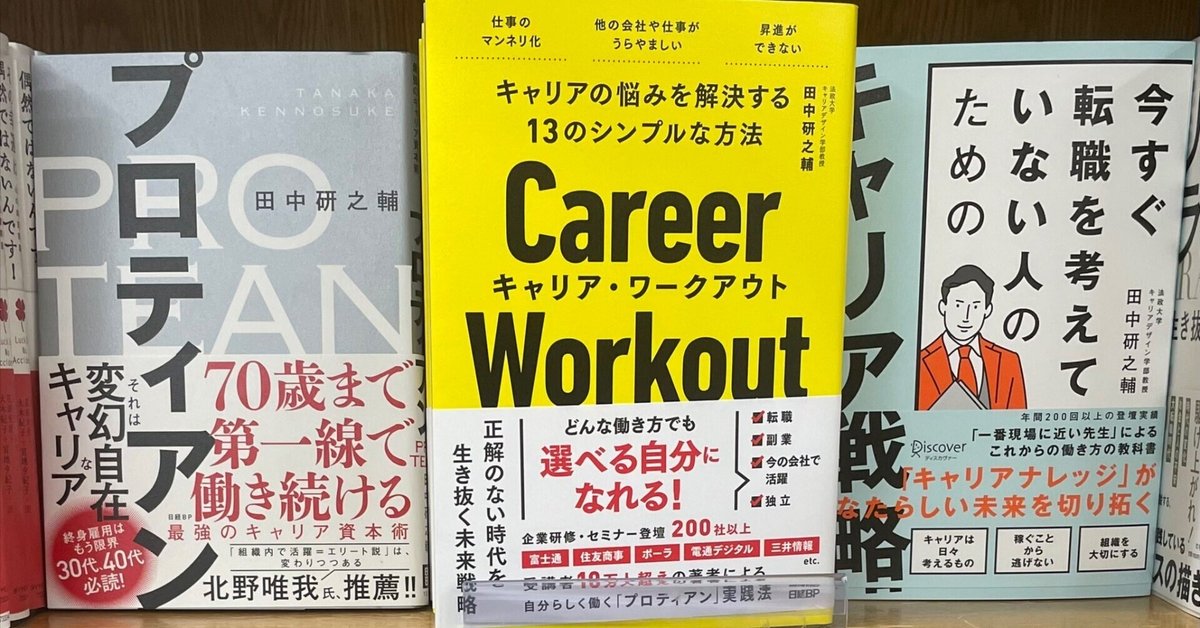
The Future of Career Ownership
Career Ownership Transformation (COX) for Achieving Sustainable Growth of Organizations and Individuals
The book "Evolving Career Ownership," recently published, summarizes the results of a full-scale overhaul of Fujitsu Ltd.'s HR system after 20 years.
In late July 2020, I was contacted by the HR development team at Fujitsu and have been involved in the full model change project for the past three and a half years. During this time, I participated in various initiatives such as giving lectures on protean careers, developing and analyzing career ownership assessments, and creating career dialogue content for YouTube.
These efforts have led to measurable and qualitative improvements, including increased organizational engagement scores, higher participation in the internal job posting system, and more active involvement in various career initiatives.
Strategic Management and HR Transformation
As repeatedly discussed in the Protean Seminar, "maximizing human capital" requires the integration of management strategy and HR strategy. In October 2020, Fujitsu officially launched its company-wide DX project, "Fujitra," aiming to transform from an IT company to a DX company.
Under the leadership of President and CDXO Takahito Tokita, and CIO and CDXO Assistant Yuzuru Fukuda, the transformation from the management strategy side began. Concurrently, EVP CHRO Hiroki Hiramatsu led the HR strategy side, starting Fujitsu's transformation in alignment with the management strategy.
In a recent joint presentation, I asked Mr. Hiramatsu why these efforts were successful. His answer was clear: "We formulated a clear HR Vision."
The management team engaged in dialogues and established the vision: "A company where diverse talents from inside and outside gather swiftly to create innovations everywhere in society." This vision emphasized promoting fluidity of talent within and outside the company and creating innovations across various regions and fields.
This HR Vision resonated with Fujitsu's purpose: "To bring trust to society through innovation and make the world more sustainable." To achieve both the purpose and the HR Vision, the HR department drove the transformation, focusing on motivating employees and identifying and removing obstacles to their motivation, essentially transforming "career brakes" into "career accelerators."
The HR Vision was not just an HR initiative but a shared understanding for integrating management strategy and human resource strategy. Fujitsu's approach demonstrates that transforming from an IT company to a DX company and promoting career ownership enables sustainable growth for both the organization and individuals. These efforts were communicated through various videos, articles, and media, also contributing to human capital disclosure.
Transition to Growth-Focused HR
With the HR Vision in place, the role of the HR department became clear. It shifted from a "defensive HR" role of management and coordination to an "offensive HR" role of fostering autonomy and development. This transition moved from a state of "not knowing where to start" to "choosing and implementing steps to achieve sustainable growth."
Moreover, the "human capital value enhancement model" clarified the tasks for the growth-focused HR. Individual career development, talent fluidity within and outside the company, and the alignment of the talent portfolio with the HR Vision and management strategy all facilitated transformation.
As the design took shape, the next stage involved diligently implementing each initiative. Employees were encouraged to understand the importance of transitioning to career autonomy, with "visualizing the current state" and "reflecting on the current state" being key elements in achieving career ownership.
The project team and I developed the career ownership assessment, which diagnoses career conditions through 16 questions, helping employees understand their current state in relation to their desired career path.
Through shared questions and visualizing career conditions, the career ownership transformation progressed through repeated career dialogues. Initially, career training focused on "personal career inventory." However, I emphasized that career issues are relational, not just individual.
We introduced the protean career theory, emphasizing relational approaches to self-directed career formation, and implemented career Cafés to facilitate career discussions among employees. These efforts encouraged employees to gradually discuss their careers amidst their busy schedules.
Conclusion
In conclusion, seeing the transformation of Fujitsu's organization highlighted that achieving career ownership is about focusing on what employees want to do, not just what they have done. This shift created a new organizational culture, and the challenge with the project team continues, including discussions on creating opportunities and systems for senior employees to thrive.
Communicating the HR Vision to all employees through various approaches and channels is essential for realizing career ownership. This journey is ongoing, and the sustainable growth of individuals and organizations hinges on your continued efforts.
Let’s continue to strive for growth and transformation in the next phase!
この記事が気に入ったらサポートをしてみませんか?
